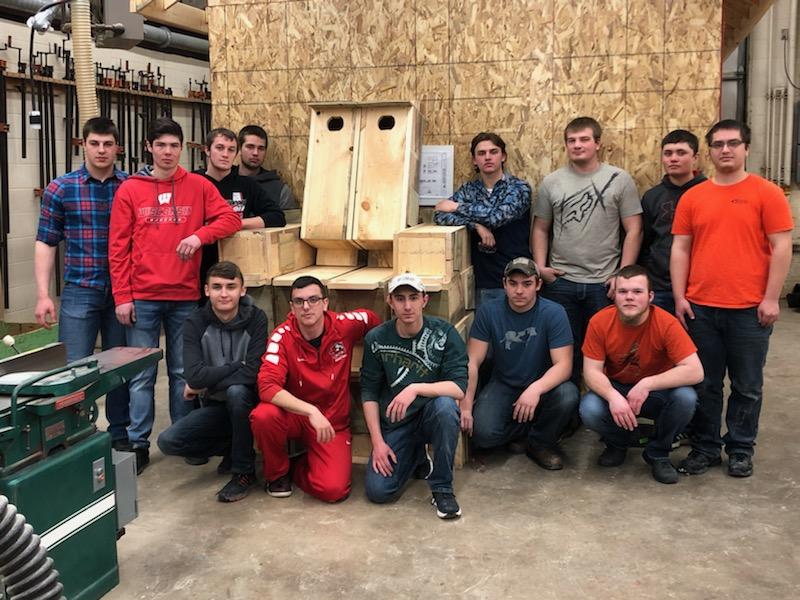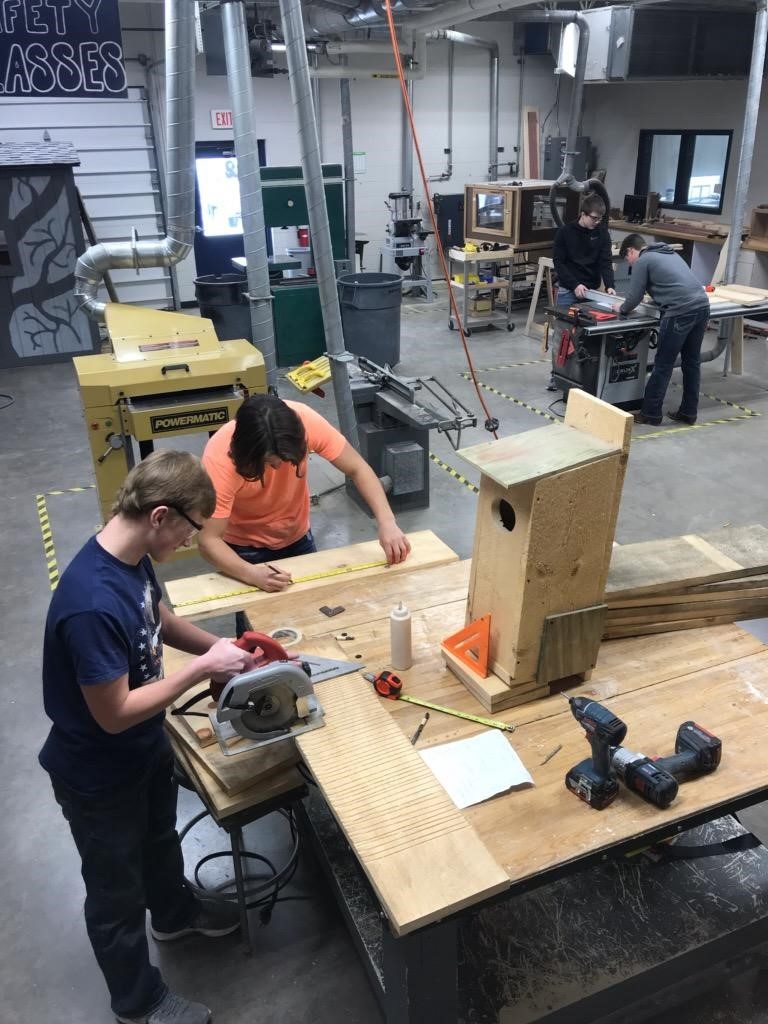6,500 houses later, the program is still in full swing in Taylor County schools
An article from WWA’s Words From The Wardens.
This article originally appeared in Wisconsin Waterfowl Association’s March 1, 2019 eNewsletter.
 By WDNR Conservation Warden Kurt Haas
By WDNR Conservation Warden Kurt Haas
One of the highlights for me during my conservation warden career is the opportunity to work with area schools on the wood duck house projects.
The community education part of my job is most rewarding. And, it is great fun to work with the area students who are growing up and share my passion for the outdoors – and that includes making sure our waterfowl habitat is protected and supported.
I thank the students, and their teachers, for helping make the Wood Duck House project fun, helpful and important.
First, I should thank my predecessor, WDNR Conservation Warden Nick Nice, who initiated this incredible program.
Warden Nick’s goal was to increase the duck habitat in Taylor County. He had a great partnership brainstorm in 1991 when he partnered with the Taylor County Sportsman’s Club to make duck houses at a private home. For the first five years, the group made about 100 houses per year. By then, word had spread how impressive and helpful these houses were that Warden Nick had to expand the project to include the Medford Middle and Medford High schools, the Rib Lake High School and the Gilman High School.
Each school makes about 35 houses each year. The costs for the houses – about $2,500 annually — are covered by the Taylor County Sportsman’s Club. The guess is that about 6,500 houses have been made since 1991. Not only are they spread across Wisconsin, the houses have found their way to other states such as South Dakota, Minnesota, Illinois and Missouri.
Let’s go back to Taylor County, where I had to work with the Gilman High School’s tech education classes, with students that built the houses for the Taylor County Lake Association.
As Teacher Tyler Pocket said, “This opportunity allowed students to learn valuable skills in the shop class and provided an opportunity to learn about giving back to our waterfowl habitat. Students were also allowed to build a duck house for themselves, and learn about the duck nesting process, which they thought was pretty neat.”
No arguments from me on that assessment.
The Medford Senior High School’s Building Construction class has been making these duck houses for a long time.
Teacher Gabriel Gelhaus says he made them himself when he took the class in 2004.
“Doing this project helps our community and our wildlife habitat quite a bit,” Teacher Gabriel said. “By doing this volunteer work, the students can see that everyone has a role in helping a community have great natural resources.”
One Medford student likened the process to an efficient and effective assembly line.The photo of the Gilman High School class at right shows the process in action. “It consisted of a few guys cutting the boards to length right away. Two more people would then go and rip them down to width,” the student said. “The front and backs then had grooves cut into them, so the smaller ducks could climb out of the houses. After the boards were cut to the right dimensions, we then organized them into piles.
We then had to make a hole in the front for the ducks to access, and a hole in one side with a door for cleaning purposes. We then assembled the houses using screws to fasten everything together.”
And that’s how a duck house is built – teamwork all the way.
If you have information regarding natural resource violations, you may confidentially report by calling or texting: VIOLATION HOTLINE: 1-800-TIP-WDNR or 1-800-847-9367. The hotline is in operation 24 hours a day, 7 days a week. Trained staff relay report information to conservation wardens.


